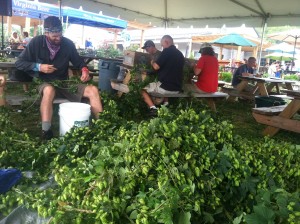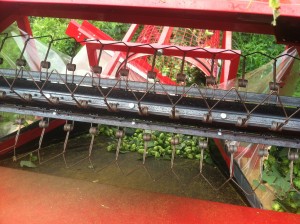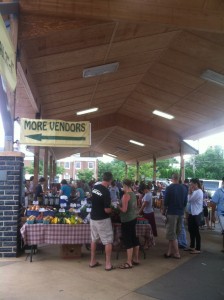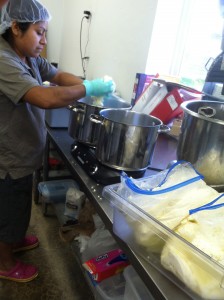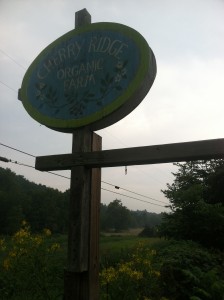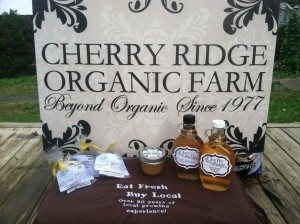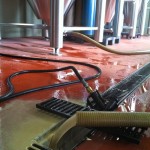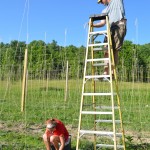At the beginning of August most of the hop plants are finished and ready to be harvested. Hops start forming on the plant in July after the plants “bur-out”. Hops are cones bright green cones that hang from the vines. If you break one open you can see a yellow powder called lupin. Once the hop cones have matured and dried out a little they are ready to be picked and harvested.
This is and can be a very time consuming process. For this reason, most hopyards host hop harvest events to help attract volunteers. Two of the hop farms I worked on, Whipple Creek Farms and Blue Mountain Brewery had these types of events. Marketing is crucial in getting the word out about these festivities and attracting volunteers. Social Media sites like Facebook are vital through this process. Posters, newspaper articles, and radio announcements are also useful and used. One way to attract potential volunteers while helping support other local artists and businesses is by adding additional activities and events. Whipple Creek Farms hop harvest was sponsored and supported by Devil’s Backbone. During this harvest festival they also included face painting, live music, local food and a new beer release.
Due to timing and a previous commitment I had to leave Virginia before the hop harvest at Whipple Creek Farms. However, I was able to attend and work at Blue Mountain Brewery’s. We arrived to Blue Mountain at around 9:30 am to start cutting down the hop plants. We did this using a ladder and the cart we used for stringing. We would then either bring the plants to tents where volunteers would be sitting at picking from 11am- closing, or cut the vines into 4 foot sections to be fed into the hop picking machine. At Blue Mountain Brewery’s festival the volunteers were promised a free lunch if they picked for 2 or more hours. This helped ensure that people were picking and encouraged them to stay for a couple hours. Volunteers sat and picked under tents while eating food, drinking beer and listening to local and live music.
The hop specialist, Stan Driver, purchased the hop picker last year. It is a fairly new piece of machinery and unfortunately has a lot of kinks that still need to be worked out. You insert the hop plants and twirl it around as these teeth strip leaves and the cones. These then tumble down into this cylinder and come down on a conveyer belt. Harvesting hops is an extremely labor intensive process. Hand picking takes hours, days and weeks. The hop harvester greatly reduces this and is extremely beneficial.
Although I sadly had to miss the Whipple Creek Farm and Devils Backbone hop harvest, I was fortunate enough to participate in another. Blue Mountain Brewery harvested about 25 trash bags full of hops and Whipple Creek Farms harvested about 800 pounds. Some of the hops from each hopyard will be dried and stored. Others will be used to make a “wet” hops beer.
I got to see how important marketing is and how many hop farms wouldn’t be able to harvest their yields without the help of volunteers. It was a great experience to work with the hop harvester, pick by hand and I got to meet a lot of great people.





